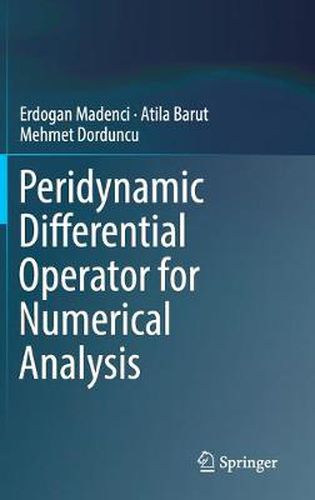Readings Newsletter
Become a Readings Member to make your shopping experience even easier.
Sign in or sign up for free!
You’re not far away from qualifying for FREE standard shipping within Australia
You’ve qualified for FREE standard shipping within Australia
The cart is loading…






This title is printed to order. This book may have been self-published. If so, we cannot guarantee the quality of the content. In the main most books will have gone through the editing process however some may not. We therefore suggest that you be aware of this before ordering this book. If in doubt check either the author or publisher’s details as we are unable to accept any returns unless they are faulty. Please contact us if you have any questions.
This book introduces the peridynamic (PD) differential operator, which enables the nonlocal form of local differentiation. PD is a bridge between differentiation and integration. It provides the computational solution of complex field equations and evaluation of derivatives of smooth or scattered data in the presence of discontinuities. PD also serves as a natural filter to smooth noisy data and to recover missing data.
This book starts with an overview of the PD concept, the derivation of the PD differential operator, its numerical implementation for the spatial and temporal derivatives, and the description of sources of error. The applications concern interpolation, regression, and smoothing of data, solutions to nonlinear ordinary differential equations, single- and multi-field partial differential equations and integro-differential equations. It describes the derivation of the weak form of PD Poisson’s and Navier’s equations for direct imposition of essential and natural boundary conditions. It also presents an alternative approach for the PD differential operator based on the least squares minimization.
Peridynamic Differential Operator for Numerical Analysis is suitable for both advanced-level student and researchers, demonstrating how to construct solutions to all of the applications. Provided as supplementary material, solution algorithms for a set of selected applications are available for more details in the numerical implementation.
$9.00 standard shipping within Australia
FREE standard shipping within Australia for orders over $100.00
Express & International shipping calculated at checkout
This title is printed to order. This book may have been self-published. If so, we cannot guarantee the quality of the content. In the main most books will have gone through the editing process however some may not. We therefore suggest that you be aware of this before ordering this book. If in doubt check either the author or publisher’s details as we are unable to accept any returns unless they are faulty. Please contact us if you have any questions.
This book introduces the peridynamic (PD) differential operator, which enables the nonlocal form of local differentiation. PD is a bridge between differentiation and integration. It provides the computational solution of complex field equations and evaluation of derivatives of smooth or scattered data in the presence of discontinuities. PD also serves as a natural filter to smooth noisy data and to recover missing data.
This book starts with an overview of the PD concept, the derivation of the PD differential operator, its numerical implementation for the spatial and temporal derivatives, and the description of sources of error. The applications concern interpolation, regression, and smoothing of data, solutions to nonlinear ordinary differential equations, single- and multi-field partial differential equations and integro-differential equations. It describes the derivation of the weak form of PD Poisson’s and Navier’s equations for direct imposition of essential and natural boundary conditions. It also presents an alternative approach for the PD differential operator based on the least squares minimization.
Peridynamic Differential Operator for Numerical Analysis is suitable for both advanced-level student and researchers, demonstrating how to construct solutions to all of the applications. Provided as supplementary material, solution algorithms for a set of selected applications are available for more details in the numerical implementation.